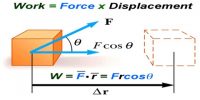According to Kirchoff’s Law, the ratio of emissive power to the absorptive power corresponding to a particular wavelength and at a given temperature is always a constant for all bodies. This constant is equal to the emissive power of a perfectly black body at the same temperature and the same wavelength. Thus, if eλ is the emissive power of a body corresponding to a wavelength λ at any given temperature, aλ is the absorptive power of the body corresponding to the same wavelength at the same temperature and Eλ is the emissive power of a perfectly black body corresponding to the same wavelength and the same temperature, then according to Kirchoff’s law
eλ/aλ = constant = Eλ
From the above equation, it is evident that if aλ is large, then eλ will also be large (i.e) if a body absorbs radiation of certain wavelength strongly then it will also strongly emit the radiation of the same wavelength. In other words, good absorbers of heat are good emitters also.














